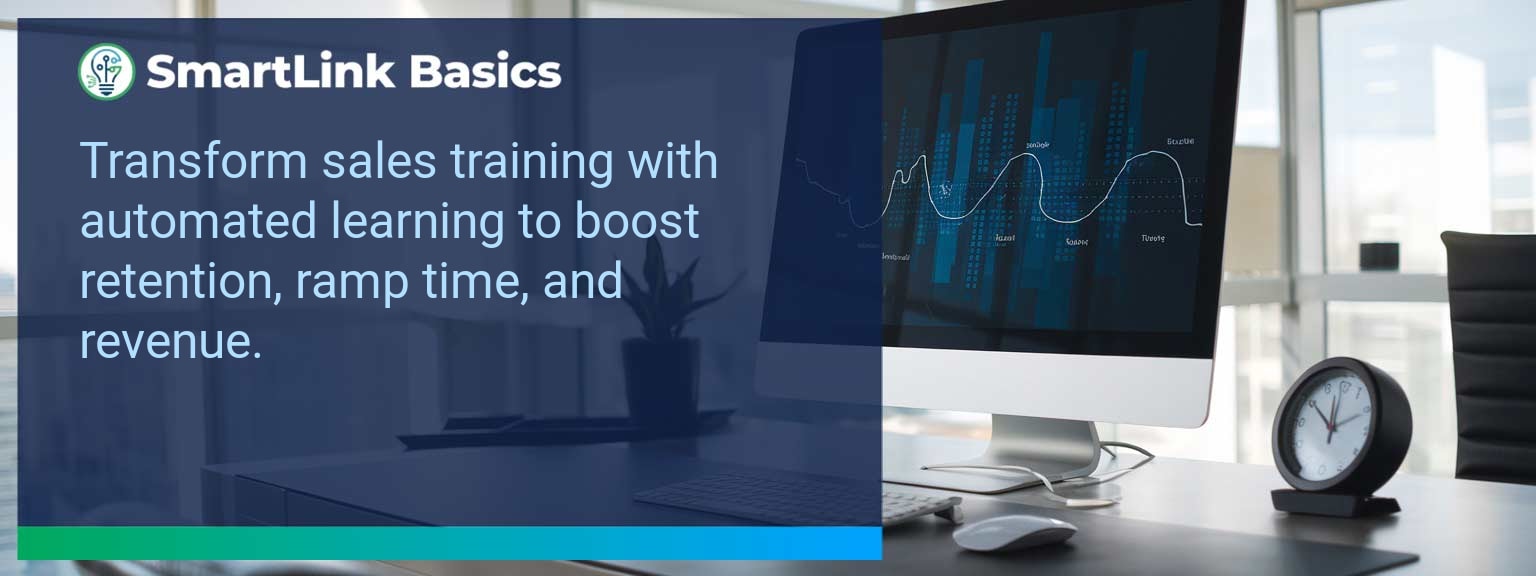Sales organizations that consistently measure, refine, and act on their performance data achieve up to 20% higher quota attainment, according to McKinsey. At SmartLink Basics, we’ve seen firsthand how aligning weekly operational insights with strategic objectives drives both short-term wins and sustainable growth. Optimizing productivity metrics now matters more than ever as AI-driven sales enablement tools allow us to pinpoint bottlenecks, forecast accurately, and improve time-to-value in execution. This article will show you how to identify and remove productivity barriers, implement precise tracking systems, and transform raw metrics into sustained performance improvement. You will also leave with a tactical 90-day framework and an exact set of leading, lagging, and quality indicators to track in your sales operation.
- Define metrics that directly link to revenue and strategic goals
- Identify efficiency barriers across workflow and technology
- Implement high-fidelity tracking methods and automation
- Regularly review data to course-correct quickly
- Use insights for continuous improvement and scalability
Identifying Barriers To Optimize Productivity Metrics
Unproductive meetings, outdated tools, and inconsistent reporting are common reasons teams fail to convert time spent into measurable output. The primary challenge in optimize productivity metrics lies in isolating the exact points in your workflow where productivity leaks occur. Without clear visibility, managers often focus on symptoms rather than causes. For example, a sales team may miss revenue goals not due to lack of leads, but because follow-up times are twice the industry benchmark. The actionable step: audit your sales workflow over one week, documenting delays, duplicated tasks, and missed handoffs. This raw map reveals where strategic adjustments or automation will yield the biggest efficiency gains.Implementing Effective Tracking Methods To Optimize Productivity Metrics
Precision in tracking productivity requires combining leading, lagging, and quality metrics. Too many sales operations over-emphasize revenue outcomes without measuring the inputs that drive them. By boosting work efficiency with integrated CRM activity logs, AI-assisted forecasting, and real-time dashboards, managers can pinpoint performance dips before they hit the bottom line. Example: when a rep’s meeting-to-proposal ratio declines two weeks in a row, leaders can intervene before quota attainment is at risk. Actionable insight: establish a weekly review that examines both activity volume and quality indicators to keep results and behaviors aligned.Achieving Significant Performance Gains
When teams track productivity properly, the result is a measurable improvement in time management and consistent attainment of goals. Organizations that act quickly on data often achieve stronger quarter-over-quarter growth without increasing headcount. One sales leader improved pipeline velocity by 18% simply by standardizing meeting agendas and enabling AI-based note capture, freeing reps for more selling time. Actionable insight: tie every workflow change to a specific KPI and measure the impact over at least two cycles before scaling.Leveraging Data For Continuous Growth
Long-term productivity improvement depends on a feedback loop that informs future strategy. Performance tracking tools can surface insights like win-rate trends by segment or the ROI of specific sales plays. By reviewing this data monthly, leaders can refine goal setting, adjust incentives, and prioritize training topics with precision. Example: discovering that smaller deals close 15% faster might inform a short-term focus on mid-market segments while enterprise cycles recover. Actionable insight: embed your metrics review into the operating cadence so that data translates into action without delay. For deeper frameworks, see the AI-driven sales enablement resources from SmartLink Basics.| Category | Metric | Definition | Target |
|---|---|---|---|
| Leading | Follow-up Response Time | Average hours to first follow-up after lead entry | ≤ 4 hours |
| Leading | Qualified Meetings Set | Number of qualified sales meetings booked weekly | 10+ |
| Lagging | Closed-Won Revenue | Total revenue closed in the period | $500K+/month |
| Lagging | Win Rate | Opportunities won ÷ opportunities pursued | 30%+ |
| Quality | Proposal Accuracy | % of proposals delivered without errors or rework | 98%+ |
| Quality | Customer Feedback Score | Average satisfaction rating from post-sale survey | ≥ 4.5/5 |
Get the 90-day plan, coaching rubric, and dashboard template to operationalize AI in your enablement program.









